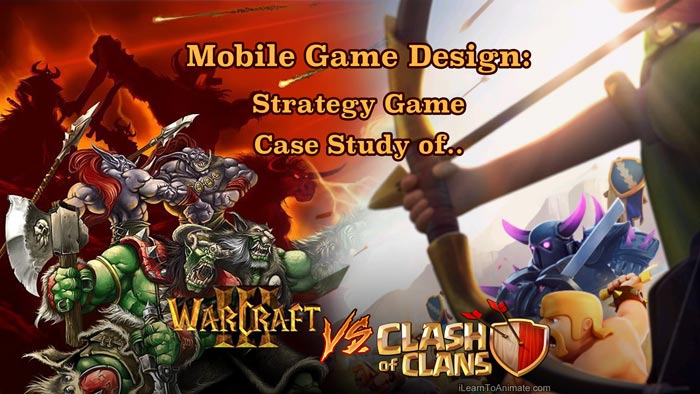
Strategy games have evolved from desktop computers to mobile devices over the decade.
Previously, I talked about the gameplay of Clash of Clan and what makes it engaging.
This post will focus on comparing the gameplay of strategy games between two different platforms, Warcraft 3 as desktop strategy game and Clash of Clan as mobile strategy game.
These are design insights I've found after playing lots of popular strategy games for many years. I make use of these insights to help me improve my own mobile game design which I'm currently working on.
I'll start off with drawing similarities on game mechanics, followed by comparing 7 game elements found between both games.
As in app purchases (IAP) do kill mobile game design, I'll be ignoring aesthetic and monetising aspects for this comparison exercise.
Let's dive straight in.
Mobile Game Design For Strategy Games
What Is Strategy Game?
CoC, W3 or Starcraft 2 (SC2) are considered war strategy games. The main objective of the game is to deploy troops, destroy opponent's base and win the game.
However, opponent's base is likely to be defended by some troops or defensive tower. Thus, player has to strategize their attack by using different troops at appropriate location, appropriate timing.
So what makes a strategy game strategizing?
In Game Variables
All troops has many variable attributes which I'll list them out in a while. Strategising begins when each unique troop has different strength and weakness in their attribute.
I'll go through the different variable attributes followed by some examples of troops found in Clash of Clan and Warcraft.
Click & Share!
Health (Hitpoint or HP)
HP marks the amount of damage a unit can take before it is eliminated. Lower HP units get eliminated very easily compared to high HP units. Many gamers refers units with high HP as 'tanks' and units with low HP as paper or glass.
Examples of high HP units:
Damage
Damage refers to the amount of HP is reduced from the opponent on a successful attack. The higher the damage a unit has, the faster it can eliminate its target.
Examples of high damage units:
Attack Speed (Rate of Fire, RoF)
Attack speed sets how often a unit strikes an attack at the opponent. Slow RoF with high damage can possibly inflict the same damage as a fast RoF with low damage.
Damage Per Second (DPS)
DPS refers to the multiplication of damage and attack speed of a unit. This values gives a rough idea how much damage a unit is able to dish out over a certain amount of time.
Click & Share!

Attack Style
Attack style is how a unit attacks. Below are some examples of different unit's attack style.
Melee
Melee attack refers to attacks made within close range of the unit's target. Melee style is typically used by units with swords or bare hand.
Example of melee units:
Range
Range or projectile refers to attacking the unit's target from a distance. Weapons such as bow, missiles and magic are examples of range attacks.
Example of range units:
Splash or Area of Effect (AoE)
Splash damage inflicts damage to many units at the same time. The splash area refers to the area size which will affect the opponents. This type of damage works best against units that cluster together.
Nova Splash
Nova splash style refers to area surrounding the unit itself. This style is very similar to melee except it affects more than 1 unit.
Example of nova splash units:
WC3: Tauren Chieftain's War Stomp

CoC: Wall breaker

Projectile Splash
Projectile splash works just like a missile. When the projectile travels a distance and hits it's target, it explodes and inflict damage to other nearby units.
Example of projectile splash:
WC3: Mortar team

CoC: Wizard

Target Selection
Targets that a unit aims to attack is generally the nearest target. To make the game more interesting, most games have some troops with selective target. For example, giants in CoC aims at defensive towers while wall breaker aims to only destroy walls.
Movement Speed
This sets how fast or slow a unit moves. Slow units might fall behind in battle while fast units rush towards the front line. This might not necessarily be desirable.
Why?
Most game designers set fast units to have lower hp and die faster. Examples wizards in CoC which are powerful units but they can't last long when they are hit.
Special Abilities
Some advance units has special abilities to make the gameplay interesting and challenging. In CoC, dark barrack troops have their unique abilities.
For example, hog riders are melee troops which have the abilities to jump over walls. This renders the wall to be useless against them.
Witches have the ability to summon some skeleton warriors to fight for her. As long as the witch is alive, she will continue to summon the skeletons when they are eliminated.
Variables are not limited to those that are listed above. Different games have different variables which makes their game troops unique.
Click & Share!
7 Comparisons Between Clash of Clan and Warcraft 3
Let's analyze the differences between mobile and desktop strategy games in terms of player's gameplay progression.
For each game element, I'll briefly talk about how they exist in each game. Then I'll share my analysis by comparing the two types of game.
1. Resource Management
Strategy games have a basic element of harvesting resources to fund war troops. Players will need to learn to manage their resources.
WC3 Resource Management:


Players starts the game with very low resources. Each player have some harvesters such as peons (Warcraft) or probes (Starcraft) to collect resources from nearby resource nodes.
As the game progresses, players would have harvested more resources. Players can then use their resources to build more harvesters or build advanced buildings and troops.
Resources are limited in each game. Once all resources are harvested, each player will have to win the game with all the resources they have.
When resources are harvested, they belongs to the individual player and cannot be taken away by opponents.
CoC Resource Management:

Resources are collected from drills. Drills provide resources to the player at a certain rate. For example, 1 hour 100 gold value.
Each drill has it's maximum capacity, e.g. 2000 gold value. When the drill collected resources to its maximum capacity, it will not produce any more resources.
Players will have collect the resources from each drill before the drill will start producing resources again.
Drills can be upgraded to increase it's rate of production and it's maximum capacity. As players advances, they can build more drills to collect resources as well. However, at each townhall level, there is a limit to the number of drills that a player can build.
Resource Management Analysis
Desktop strategy games mainly starts all resources from scratch for each game. They are considered real-time strategy game, including the resources.
On the contrary, mobile strategy game aims for short game. Thus, resources are made accumulative. Players collects their resources over time even when they are not playing. This keeps the player's progression going while off-line.
2. Building Units
Before any battle starts, the player needs to gather their best combination of troops to fight a war. This can be done by building troops of their choices.
WC3 Building Units:
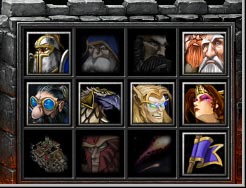
Building of troops requires time. The quickest building time can be few seconds while the longest time can be a couple of minutes.
CoC Building Units:
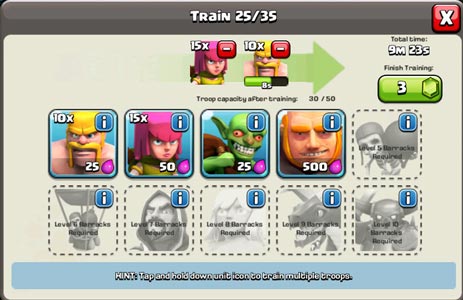
Troops building time also requires time. The quickest unit build time is 20 seconds and the slowest unit build time is 45 minutes long.
Building Units Analysis
Both desktop and mobile games requires time to build their troops. Desktop strategy game has short (few minutes) building time even for its slowest building unit. While mobile game's slowest building unit takes up to 45 minutes to build.
Long building units in both games have a characteristic. These units are advanced and powerful units. Examples of such units in Warcraft are frost wyrm, chimeras, taurens. For CoC, some examples are golem, lava hounds, dragons and P.E.K.K.A. These units have high HP or they deal a huge amount of damage.
Having long building time for these units prevents player from spamming these powerful troops in the game play. These units are similar to game such as Street Fighters and King of Fighters where characters ultimate attack skills. Players can only use these special abilities once in a while. As for strategy games, such troops are similarly 'controlled' by long building time.
3. Units and Buildings Upgrade
Strategy games are able to upgrade their units and buildings to either become stronger in attacking or defending.
WC3 Units And Buildings Upgrade:
Units and buildings upgrade takes up few minutes in the game. Some buildings and upgrades are only unlocked after the main base is upgraded. Units upgrade and building time take up few minutes in the game.
CoC Units And Buildings Upgrade:
New play's units and buildings upgrade starts off with few seconds and progresses to minutes. As the players levels up their townhall, upgrades increases to hours and eventually to days.
Click & Share!
Units And Buildings Upgrade Analysis
Upgrading of units for both platform takes time. Desktop games are real time and plays with many players at the same time. Thus, upgrading of units and building is also a critical element in winning a game. Players who are able to manage their time effectively have higher chance to win.
For mobile games, they are designed for short attention span of game time. CoC's main battle game is purely focusing on fighting. Thus, upgrading of units and buildings are done out of battle time.
Upgrading process can range from 1 day to 14 days. This slows down the rate of advancement of the player as they progress to higher level of the game. Comparable to RPG games, players are unable to level up so quickly to the high level, otherwise game would be deem too easy.
4. Deploying of Units
To begin a fight with opponent, the player needs to deploy his units to engage his enemy.
WC3 Deploying of Units:
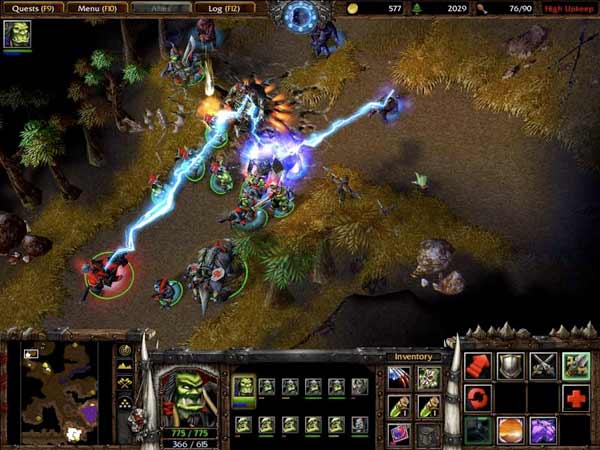
Fighting in battles requires a lot of control on the troops. Players are able to group their troops, command them to attack specific targets, cast special abilities and many more. Players have many shortcut keys they can assign on their keyboard to customize their controls.
CoC Deploying of Units:
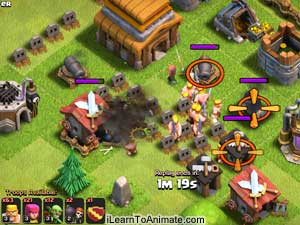
The battle is very much simplified. Players only needs do 3 things, they need to deploy the units at their chosen location, cast limited spells and use abilities of the heros with one touch. The remaining of the fight is controlled by artificial intelligence (AI). With unique AI for each type of troops, they fight based on their own characteristics. For example, Giants aim at only defense towers and goblins aim at only resources.
Deploying of Units Analysis
Desktop strategy games are given more controls because players are able to use their keyboards to micromanage their troops.
However mobile game's interaction is limited to tap, hold, drag and multi-touch. Players would not be able to give commands similar to desktop games. Thus mobile games simplifies their game play with easier interactivities.
5. Multiplayer Battle
The exciting element of strategy games is their multiplayer feature. Players are able to fight with real online players, thus pushing the challenge and excitement to the next level.
WC3 Multiplayer Battle:
Battles are real time and across multiplayer. This means everyone is playing at the same time and all actions affects each other. WC3 uses Battle.net to match up players for ladder games. Players are matched up with choices of 1 vs 1 to 4 vs 4. Custom maps are also available for random players to join and play.
CoC Multimedia Battle:
Battles are asynchronous. Although players will fight against an opponent, the opponent is not really reacting to the battle. The player initiating the fight is the only active player interacting in the game. The matched up opponent is labelled as "offline". He's base is left as it is last saved and the active player will aim to destroy it.
Multiplayer Battle Analysis
Multiplayer feature for desktop strategy games allows more than 2 players to play at the same time. This makes desktop games very exciting as they are interacting with real players. Similarly, mobile games have multiplayer function but not many games were made real time. Thats because mobile devices have limited resources, which includes internet connection, processing power, etc.
Coc is designed to play with multiplayer feature, but in an asynchronous mode. This reduces the processing resources for mobile devices. When a player fights another player, he is actually fighting against a "saved" data on the game server. The player's opponent is only responding by its default AI characteristics rather than a real player's command.
Click & Share!
6. Players Focus And Intensity
Every game requires a certain amount of focus and intensity of the player. This captures the player's attention to solve the game's challenge.
WC3 Players Focus and Intensity:
A game in WC3, depending on number of players, can last relatively long. A game can last from 15 minutes and even up to more than an hour. In the middle of the game, players are not able to quit or else they will be considered a lost.
CoC Players Focus and Intensity
CoC has short span gameplay. Each game generally last about 4 to 6 minutes per game, depending on searching time. Commitment and dedication for each game is considered short. Casual players can play when they want a short break. However, hardcore players can continuously play until they get tired of it.
Players Focus and Intensity Analysis
W3 games requires a longer duration of player's focus for each game. This duration is dependent on the size of the game map and number of players. Once the battle ends, there is no game activity for the player other than joining another game.
CoC requires a shorter attention span of the player for a game. This suits casual players that wants short game thrills with their mobile devices. During non battle time, players are able design their base, manage their resources and build troops for next game.
CoC players are still able to continue to play as long as they have their troops and spells ready. Otherwise, they will wait for their troops to complete building or "gem" for faster troops building speed.
7. Overall Progression
Every player has a progression for their game. It can be their high score, game levels, in game items achievement and many other progressions. Progression let players feel accomplished and entice them to achieve more through the game.
WC3 Overall Progression:
Player gets to enjoy the epic story of warcraft series. They get to roleplay at some point of time in the game and experience great adventures as if they are in the story. The single player mode takes time to slowly introduce units, heros and game play to the player. There are stories for all 4 different races for WC3 and each race has their unique storyline.
Once the player completes the story, they can play multiplayer games and climb up their ladder ranking on Battle.net. Apart from ladder ranking, WC3 player does not have any other progression out of the game.
CoC Overall Progression:
There is no story for CoC game. A new gamer will start with introduction tutorial to learn how to play. Once they completed, they are then guided to the single player maps which consist of 50 different levels. However, players are free to play multiplayer at any point of time and challenge other online players.
Out of the game's main battle, every player has their own progression in terms of townhall level, trophies, resources, unit upgrades, defense upgrades. This is very similar to RPG or MMORPG games where player's in-game character is 'saved' and they do not need to start from scratch for each game.
Coc has an off line progression element. Players gain "passive" resource using buildings such as gold and elixir drills. These drills continue to work and generates resources even when the player is offline. For casual players who do not play (or farm) often, they are still able to progress, but of course at a very much slower rate.
Overall Progression Analysis:
WC3 games are independent games on their own. They have single player story mode which allows saving of story progress. WC3 also provides multiplayer set up for players to play ladder ranking or custom maps. However, all activities happens when the player is playing in the game.
CoC is a mobile strategy game that can be considered a fusion of short strategy game with role playing game's (RPG) elements, e.g. collective progression of resources and upgrades. These progression are saved and players retain their progress infinitely. This gives players a feel that the game is part of their lifestyle because players see progression daily, even when they are offline.
Conclusion
Desktop strategy games requires full attention by a player throughout the entire game in multiplayer mode. Each game can last from 10 minutes to 1 hours. It makes total sense for long duration and high quality graphics for playing desktop games because of powerful desktop computer's capability.
Desktop gamers gets to use keyboards for lots of interactivities. This allows players to have high control abilities and create complex manoeuvres in the game.
On the other hand, strategy games in mobile devices are much simplified. That is because of the lower processing power and lower battery capacity of a mobile device. Thus, mobile game design must factor these technology boundaries before designing a mobile game.
Mobile devices are also limited to touch screen, therefore strategy game interactivities will need to scale down. This allows user to play with ease and convenience.
Mobile devices had become part of a person's lifestyle. That is why mobile games are designed to have shorter game play for player's convenience.
Have any thoughts? Feel free to comment and positively discuss using the comment box below!
Click & Share!

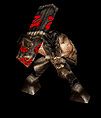
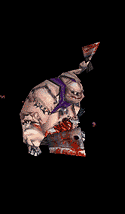





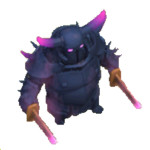





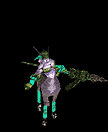








![]()





